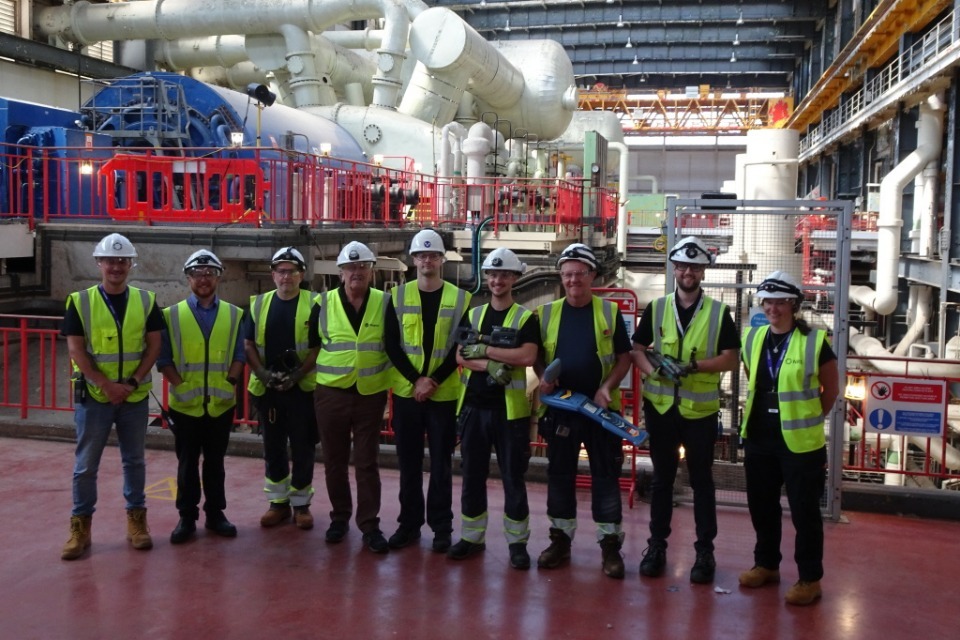Pioneering innovation enabled the team to cut 356 electrical cables inside the tunnels between the turbine hall and reactor building of the redundant nuclear power station over two weekends – reducing work time by 91%. This was achieved by disconnecting the site’s entire power supply to remove the risk of cutting through a live cable and the need to trace each cable to its source.
Wider safety measures avoided work near to potential asbestos which eliminated the need for scaffolding and prevented work in confined spaces or close to degrading assets.
John Alderton, Oldbury Site Director, commented
I’m incredibly proud of how everyone collaborated to deliver this project safely and successfully. It’s a great example of how innovation and creative thinking can solve long-standing challenges. By learning from previous cable cutting campaigns and applying those insights to a new strategy, the team has truly transformed the way we work and set a new benchmark for the industry.
The learning from this innovative method of bulk cable cutting can be applied to any area of decommissioning in the right circumstances. It took 18 months to complete over 2,000 cable cuts in challenging environments and declare the building free of electrical hazards following a period of verification.
Adam Bird, Oldbury Site Senior Project Engineer, said
Delivering this solution has been a great challenge that has really stretched our ways of thinking – not only within the team but with others on site too.
Now that the turbine hall has been isolated, we are looking forward to commencing bulk asbestos removal, followed by de-planting of the building. The turbine hall, welfare area and administration complex will then be demolished – clearing a four-acre footprint ready for its next use.

Heather Barton, NDA Head of Performance Improvement, added
Learning from each other across the NDA group remains to be a critical enabler to deliver our mission.
It presents us with opportunities such as this where we can look at how this could be replicated elsewhere across our estate, and where we can present ourselves with more opportunities to challenge the norm.
These shared and mutual benefits can truly be realised across our group, bringing innovation, collaboration, and joint solutions to our common challenges, enhancing every business in our group.
Tom Eagleton, the Office for Nuclear Regulation’s (ONR) Head of Safety Regulation for decommissioning, fuel and waste sites, commented
ONR was pleased to support the approach taken by NRS to de-cabling at Oldbury.
The method used at the site delivered significant safety benefits to the workers involved, including reducing potential exposure to asbestos and elimination of risks associated with inadvertently cutting live cables.
As an enabling regulator, we will always be open to holding discussions with licensees and dutyholders about novel and innovative approaches, providing they are safe and do not compromise worker or public safety.
Over its lifetime Oldbury generated 137.5 terawatt hours of low carbon electricity – enough to power one million homes for over 20 years. The site was shut down in February 2012 after 44 years of safe operation.
This most recent NRS achievement follows on from the successful de-plant and demolition of the turbine hall and adjoining structures at Sizewell A site in Suffolk. Learning from the Sizewell project is helping plans to deliver similar work at Oldbury site.

